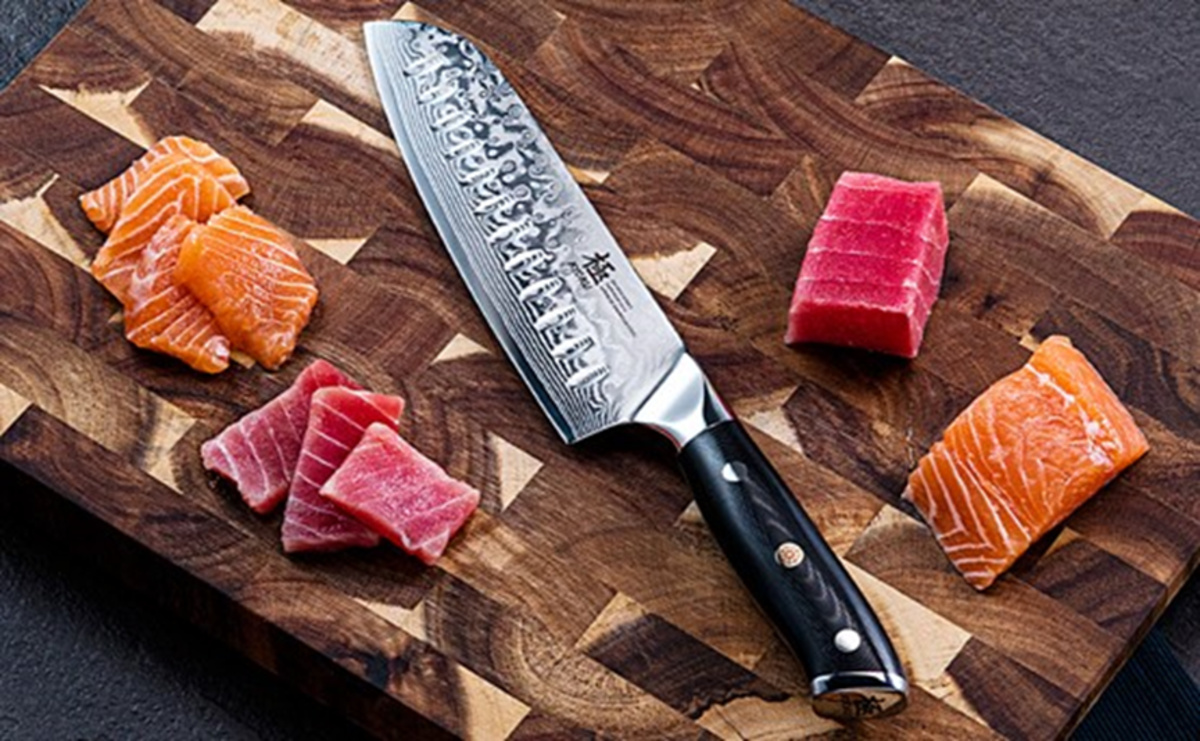Blog
Santoku Knives Explained: What Makes This Japanese Blade So Versatile
Santoku Knives Explained: What Makes This Japanese Blade So Versatile?
If you've ever chopped veggies and thought, "There has to be a better knife for this," you're not alone—and chances are, the answer might just be the Santoku knife. This Japanese blade has quietly become a favorite in both home kitchens and professional settings, and once you understand why, it’s easy to see what all the fuss is about.
Let’s break down what makes the Santoku knife so special—and why it might deserve a permanent spot in your kitchen drawer.
A Blade with History and Purpose
The word Santoku means "three virtues" or "three uses" in Japanese—slicing, dicing, and mincing. And true to its name, this knife is designed to handle those three essential kitchen tasks with ease.
Originally developed in Japan in the mid-20th century, the Santoku was created as a hybrid of traditional Japanese knife styles and Western chef’s knives. The goal? A multi-purpose blade that could handle everything from meat to vegetables with grace and precision.
What Sets a Santoku Knife Apart
At first glance, a Santoku knife might remind you of a Western chef’s knife—but look closer, and the differences become clear:
Blade Length: Typically, between 5 and 7 inches—shorter and easier to control than a standard 8-inch chef’s knife.
Flat Edge: Unlike the curved belly of Western knives, the Santoku has a flatter edge, which means you use a more direct up-and-down motion when cutting.
Sheep’s Foot Tip: The spine curves down gently toward the tip, giving the blade a compact, efficient shape that’s great for precision work.
Thinner, Lighter Blade: This makes it feel nimble and well-balanced in hand—perfect for repetitive prep tasks.
Granton Edge (Optional): Many Santokus have small scallops or indentations along the blade that help prevent food from sticking while slicing.
So, Why Is It So Versatile?
The Santoku knife really shines because it simplifies your prep work. Whether you’re finely mincing garlic, slicing cucumbers, or dicing chicken, the Santoku handles it all with ease.
Its shorter blade gives you more control, which is great for anyone with smaller hands or who’s new to cooking. The thin edge glides effortlessly through food, and the flat profile makes it easy to achieve clean cuts without needing a rocking motion.
It’s also equally effective whether you’re right- or left-handed, making it a universal favorite.
Everyday Uses: Where the Santoku Excels
This knife earns its “three virtues” label every day in the kitchen. Here’s where it really shines:
Vegetables: Perfect for slicing everything from leafy greens to root veggies.
Meats: Handles boneless chicken, beef, or pork with precision—great for trimming fat or making clean cuts.
Herbs and Aromatics: Minces garlic, parsley, cilantro, and more without turning them to mush.
Snacks and Extras: From chopping nuts to slicing cheese or fruit, the Santoku is a reliable go-to.
Santoku vs. Western Chef’s Knife: What's the Difference?
Both knives are versatile, but they cater to slightly different styles of cutting:
Bottom line? If you prefer a lighter knife that’s easy to control and great for straight-down cuts, the Santoku is for you. Many chefs keep both on hand and switch depending on the task.
How to Choose the Right Santoku Knife
If you’re ready to give one a try, here are a few things to keep in mind:
Blade Material: Japanese stainless steels like VG10 or AUS-8 offer sharpness and rust resistance.
Handle Comfort: Look for ergonomic handles—wood, composite, or even Western-style grips can work.
Weight and Balance: Pick one that feels balanced in your hand—not too heavy at the blade or handle.
Edge Type: A Granton edge can be helpful for slicing sticky foods like potatoes or cucumbers.
If you’re looking for a reliable option that blends traditional Japanese craftsmanship with modern durability, Kyoku Santoku knives are worth considering. They use premium Japanese steel for razor-sharp edges, offer comfortable, well-balanced handles, and come in designs that suit both everyday cooks and serious culinary enthusiasts.
Caring for Your Santoku
To keep your knife in top shape:
Hand wash only—dishwashers can dull or damage the blade.
Dry immediately to prevent rust, even with stainless steel.
Store safely in a knife block or on a magnetic strip.
Hone regularly to keep the edge aligned, and sharpen as needed with a whetstone or professional service.
Use the right surface—pair your Santoku with a non-toxic cutting board made from bamboo, hardwood, or food-safe composite materials to protect the blade and keep your prep space safe.
Final Thoughts
The Santoku knife might just be the most underrated kitchen tool out there. It’s sharp, efficient, and built for everyday cooking. Whether you’re prepping a weeknight stir-fry or a holiday feast, this Japanese blade can do it all—making it a smart addition to any kitchen setup. If you haven’t tried one yet, it might be time to see why so many cooks swear by it. After all, versatility is one of the best ingredients you can have.





Comments